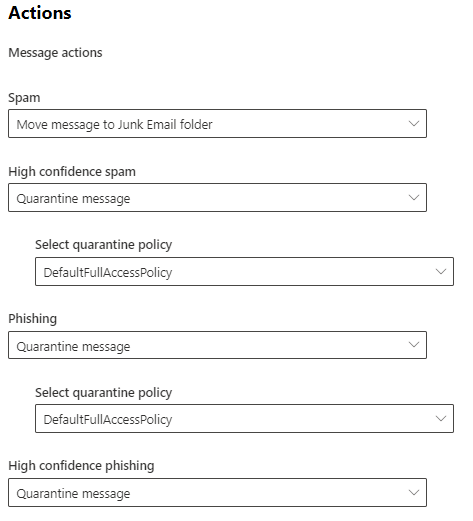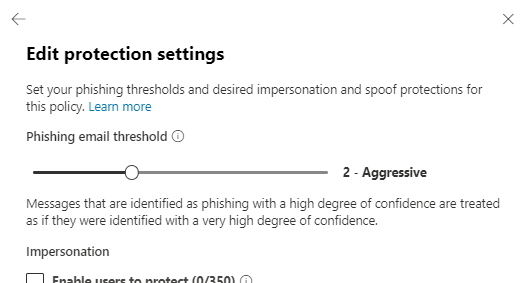Hi
Looking to understand how the Advanced phishing thresholds in anti-phishing policies relate to the Anti-Spam policy actions related to Phishing and High confidence phishing.
The current situation:
- We have Defender for Office 365 licencing
- We currently have an Anti-Spam policy with the following actions:

There is little documentation on the phishing thresholds. Documentation does explain that "The following advanced phishing thresholds are only available in anti-phishing policies in Defender for Office 365. These thresholds control the sensitivity for applying machine learning models to messages to determine a phishing verdict:"
However, details on the threshholds themselves seem to indicate that it relates to how an email is handled post determination, as opposed to the determination of a verdict to begin with. eg: "2 - Aggressive: Messages that are identified as phishing with a high degree of confidence are treated as if they were identified with a very high degree of confidence."
Firstly, which is true?
Secondly, if the answer includes the latter, how does this interact with the Anti-Spam policy set to quarantine email marked as phishing? Isn't all identified phishing email sent to quarantine anyway? This hints back to the idea that the Anti-Phishing threshold policy relates more to the machine learning side of things then how it handles email, however its very ambiguous!
Thankyou for anyone willing to tackle my convoluted question :)


